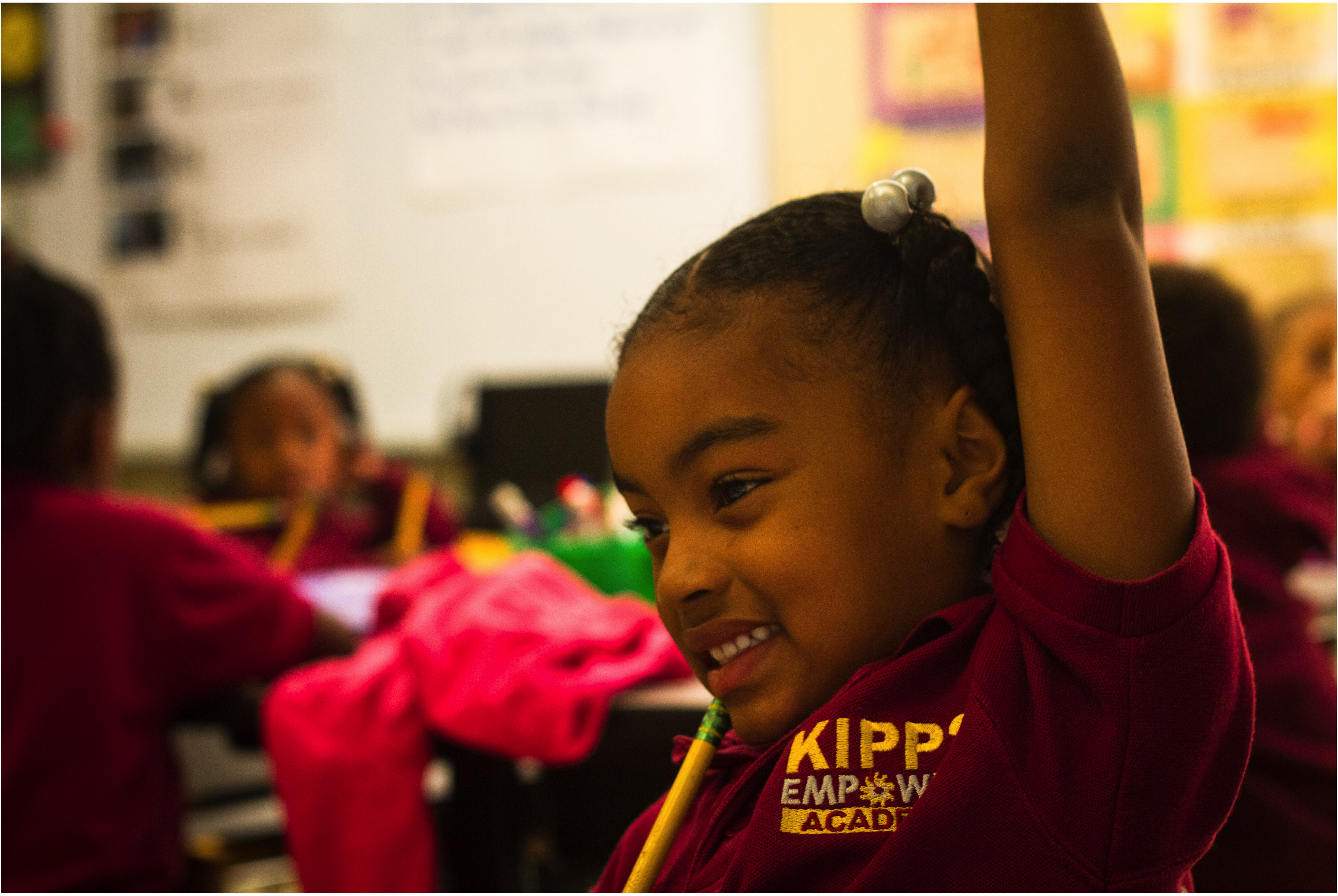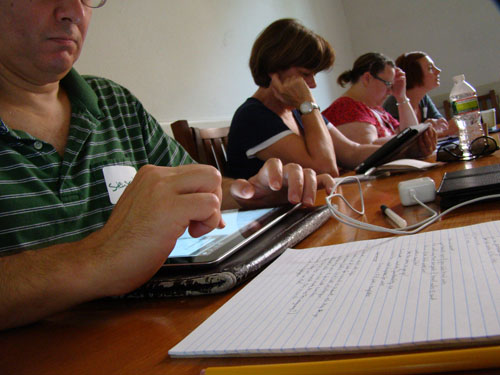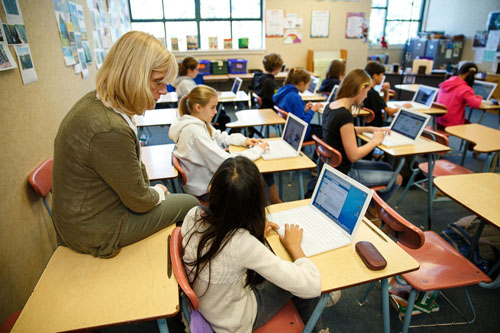破坏与征服! 多远的技术去确保不让一个孩子被学校留下? 在美国的比赛,以消除国内和国际的成绩差距, 当将混合学习模式是有效的,足以扰乱现有的主流教室系统?
在 2008, Michael Horn and Clayton M. 克里斯滕森共同撰写的书 妨害类: 如何突破性创新将改变世界可以学习 (麦格劳 - 希尔). 今天, 作为Innosight公司学会常务理事, 霍恩带领一个团队,研究了创新的方法技术已经改变美国的教育体系为一体,其中每一个学生, 无论他/她的学习需求, 可以实现他/她的全部潜力. 希瑟铆接是一位资深研究员的教育,在实践Innosight公司研究所的作者 “K-12的兴起混合学习: 新兴车型的配置文件。”
我问迈克尔和希瑟在本周的版本分享他们的混合式学习的见解 全球搜索教育.
石南属, 你能简要介绍术语 “混合式学习” 与四种不同类型的模型,作为混合学习?
混合式学习是一个正规的教育方案,其中包括两个组成部分. 首先是在线提供的内容和教学, 那里的学生至少有一定的控制时间, 地方, 路径, 和/或他们的学习步伐. 第二个是,学生们也参加监督砖和砂浆的位置.
通过我们的研究, 我们正在观察四种主要模式. 旋转模式是任何时候的学生任何给定的过程中旋转的在线学习等方式之间的固定时间表. 在Flex模型, 学生附表是多个流体和内容,并指示主要是由因特网提供. 自我混合模型的任何时间学生参加一个或多个课程,完全在线,以补充他们的传统课程. 富集,虚拟模型涉及学生划分他们的时间每门课程中就读的校园和网上远程学习之间.
迈克尔·, 这四款车型做你相信是最好的?
没有一个模型是 “最好的” 因为如果. 这一点, 不同的学校将能够到位不同模型根据它们的不同的需求和能力. 长期, 我最好奇的Flex的模型,并认为它与自我混合模式的组合将有可能代表了理想的教育模式. 究其原因是它最自然给学生首先让所有学生都能个性化,并拥有自己的学习, 这应该意味着更多的学生积极性,更有效地学习所有. Flex的模型也创造自然的和潜在的丰富的机会,让学生与其他学生互动参与根据每个学生的需求,同时保持挑战性的项目,并有可能加强活动,如健身和艺术.
Can you give me a real life example of the Flex model?
One of the best examples I have seen of the flex model was in Morgan Hill, 加利福尼亚州. This is a district south of San Jose where about a third of its students are Hispanic and I believe over a third of its students are on free-and-reduced price lunch. The school is called the Silicon Valley Flex Academy – 等级 6 通过 12. As you walk into the school there are a couple of huge open spaces on either side where every student has his/her own office. In this space, each student has his/her own computer. The students are encouraged to decorate their own space with things they like (in the same way an adult might decorate an office at work). There are break out classrooms around the perimeter of the building. Here teachers are getting the data on how the kids are doing. Teachers can pull students into these break-out classrooms in very small groups. The teacher is then able to focus on a student’s individual issues. The teacher’s job is totally different in this arrangement. The fascinating thing was how much ownership the students have over their learning. They all knew exactly what was expected of them the entire year. They knew exactly how they were doing at any point. Their job was to learn the material. If they could get the work done during the school day there was no homework. So it was up to the individual students to make those decisions.
You say “the teacher’s job is totally different in this arrangement.” Were teachers learning on the job? Did you see any challenges in terms of educating teachers to use the Flex model?
The teachers I spoke to explained that they had been trained to do lesson planning, lectures to large groups of students and classroom management — none of which they were now doing. They explained that the adjustment was difficult. Training has not been built into the formal teacher training system for programs like this, and few are really thinking about it at the moment. 现在, the teacher is still doing teaching or tutoring when pulling students out into small groups for project-based work, but instead of this being determined by a pacing guide, this is now being determined by where the students are in their learning. What was so interesting was that in this model, teachers were able to do the tutoring and value enrichment work that teachers really like to do but don’t always get time to do in a classroom. One of the challenges the teachers mentioned was staying on top of scheduling. How do you keep track when you have students at different places in the curriculum? Those were tough decisions for teachers to make and they were, as you say, learning on the job.
What feedback did you get from the students in terms of being motivated to learn?
A number of students said to me: “Last night I was so bored. It was a three-day weekend and I decided to jump on my computer and do some math.” So I said, “You decided to jump on during the weekend and do math?” One student explained she thought it was fun to go on and get ahead a little bit. When I asked them if they ever did that in their old school model, they replied, “Not a chance!” 当学生拥有学习, they feel responsible for it and motivated to do it. What they also appreciated was that the teacher was no longer there to “punish them” 或 “grade them down”. Instead the teacher was there to help them reach their goal. This is much more of an environment built around success and motivation versus failure.
How far can online learning in blended systems go towards leveling the playing field for different types of learners?
眼下, it appears that the sky is the limit but we also don’t fully know. Because online learning allows for modularity, it can in theory customize learning for each student’s individual needs. 然而, we are just in the early days of leveraging this as well as leveraging the enormous amounts of data we can receive in real-time about how a student is doing, which should allow us to adapt our approaches in exciting ways also in real time for each child. Today we’ve grasped the power of online learning to individualize for students, particularly those struggling ones, along the dimension of pace. But we haven’t come close to grasping the power to vary the paths for students.
石南属, what do you believe is the effectiveness of a blended learning school versus a brick and mortal school and versus a school that uses some tech but is not blended?
By many measures, America’s traditional brick-and-mortar classroom model is failing. 该计划的国际学生评估 (PISA) 在 2009 ranked U.S. students as 14th in reading, 25th in math, and 17th in science compared to students in other industrialized countries. One cause of this underperformance is that the system is inflexible. Students move through grade levels in standardized batches and monolithic curricula, regardless of how each child learns best. School leaders often think technology will help. They add bling with electronic whiteboards, 解锁iPhone和iPad, and digital lesson plans, but none of these on its own transforms the factory structure. The attraction of blending online learning into schools is that online learning allows for modularity. It can customize around the learning pathway each student follows, who teaches them, and how fast they master each concept. Several schools are already delivering highly customized blended-learning environments, and the results are promising.
迈克尔·, what challenges do you see with blended learning systems?
I think one challenge is executing it well. I think the changing role of the teacher is profoundly challenging. It is unfair that a huge percentage of what teachers have been taught is irrelevant in this learning environment. The beauty of this system is that computers are able to do what computers do well. Humans are freed up to do what humans do best.
I also think the assessment system that we have in place in schools is a problem for this learning system going forward. Assessment needs to be based on where each individual child started and then grew to and finally ended up in a particular year, versus a snapshot once a year view of an entire school.
For more information on the Innosight Institute: HTTP://www.innosightinstitute.org/

Photos courtesy of Silicon Valley Flex Academy and Stern + 合伙人.
在全球寻找教育, 和我一样,全球知名的思想领袖,包括迈克尔·巴伯爵士 (英国), 何. 迈克尔座 (美国), 何. 莱昂特司特因 (美国), 克莱克里斯坦森教授 (美国), 何. 琳达·达林 - 哈蒙德 (美国), 何. 马达夫查万 (印度), 迈克尔·富兰教授 (加拿大), 霍华德·加德纳教授 (美国), 伊冯娜赫尔曼教授 (荷兰), 克里斯汀Helstad教授 (挪威), 让·亨德里克森 (美国), 玫瑰Hipkins教授 (新西兰), 科妮莉亚Hoogland教授 (加拿大), 太太. 尚塔尔考夫曼 (比利时), 何. Eija Kauppinen (芬兰), 国务秘书塔皮奥Kosunen (芬兰), 多米尼克·拉方丹教授 (比利时), 休·劳德教授 (英国), 本·莱文教授 (加拿大), 巴里McGaw教授 (澳大利亚), 希夫纳达尔 (印度), Ř教授. 纳塔拉詹 (印度), 何. 吴PAK (新加坡), 何. 丹尼斯教皇 (美国), 斯瑞达拉贾戈帕兰 (印度), 何. 黛安·拉维奇 (美国), 肯·罗宾逊爵士 (英国), 帕西SAHLBERG教授 (芬兰), 安德烈亚斯·施莱歇 (PISA, 经合组织), 何. 安东尼·塞尔顿 (英国), 何. 大卫·谢弗 (美国), 何. 基尔斯滕都沉浸式 (挪威), 总理斯蒂芬·SPAHN (美国), 伊夫Theze (公立中学美语), 查尔斯Ungerleider教授 (加拿大), 托尼·瓦格纳教授 (美国), 大卫·沃森爵士 (英国), 迪伦Wiliam教授 (英国), 何. 马克沃莫尔德 (英国), 西奥Wubbels教授 (荷兰), 迈克尔·杨教授 (英国), 和张民选教授 (中国) 因为他们探索所有国家今天面临的大画面的教育问题. 全球搜索教育社区页面
ç. M. 鲁宾是两个广为传诵的在线系列,她接受了笔者 2011 厄普顿·辛克莱奖, “全球搜索教育” 和 “我们将如何阅读?” 她也是三本畅销书, 其中 真正的爱丽丝梦游仙境.






最新评论